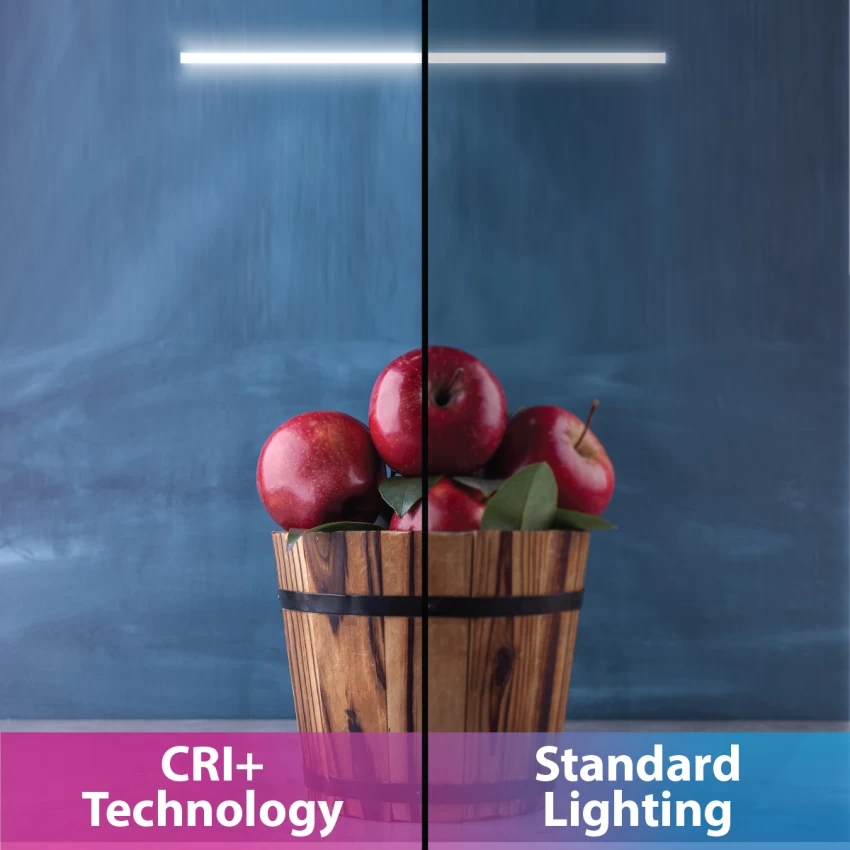CRI stands for Color Rendering Index, and it’s a measure used to evaluate how accurately a light source renders colors compared to a natural light source. The CRI scale ranges from 0 to 100, with higher values indicating better color accuracy.
In the context of LED lights, CRI is particularly important because different LED lights can have varying impacts on how colors appear under their illumination. A high CRI LED light (typically above 80, with 90 or above being excellent) will make colors appear more true to life and vibrant, similar to how they would look under natural sunlight. This is crucial for tasks where color accuracy is essential, such as in art studios, retail settings, and medical environments.
LED lights with a low CRI can cause colors to look dull or distorted, which might be less desirable for applications requiring precise color matching.
CRI PLUS TECHNOLOGY
The term “CRI+” often refers to a higher standard of Color Rendering Index beyond the traditional CRI scale. While the standard CRI scale goes up to 100, CRI+ is used to denote LEDs that offer an even more accurate color rendering.
Here’s a bit more detail on CRI and CRI+:
- Standard CRI: Measures how well a light source renders colors compared to a reference light source, typically natural sunlight or incandescent light. A CRI of 80 is considered acceptable for most applications, while a CRI of 90 or above is excellent.
- CRI+: Often implies that the LED light has a CRI rating above 90 and may include additional specifications or improvements in color rendering. In some cases, CRI+ can also denote a broader color spectrum or additional criteria that contribute to superior color quality.
In essence, CRI+ is a marketing term used to highlight LEDs that provide exceptional color rendering performance, often exceeding the standard CRI thresholds.
BROWSE PRODUCTS WITH CRI+ TECHNOLOGY IN OUR STORE – click here

